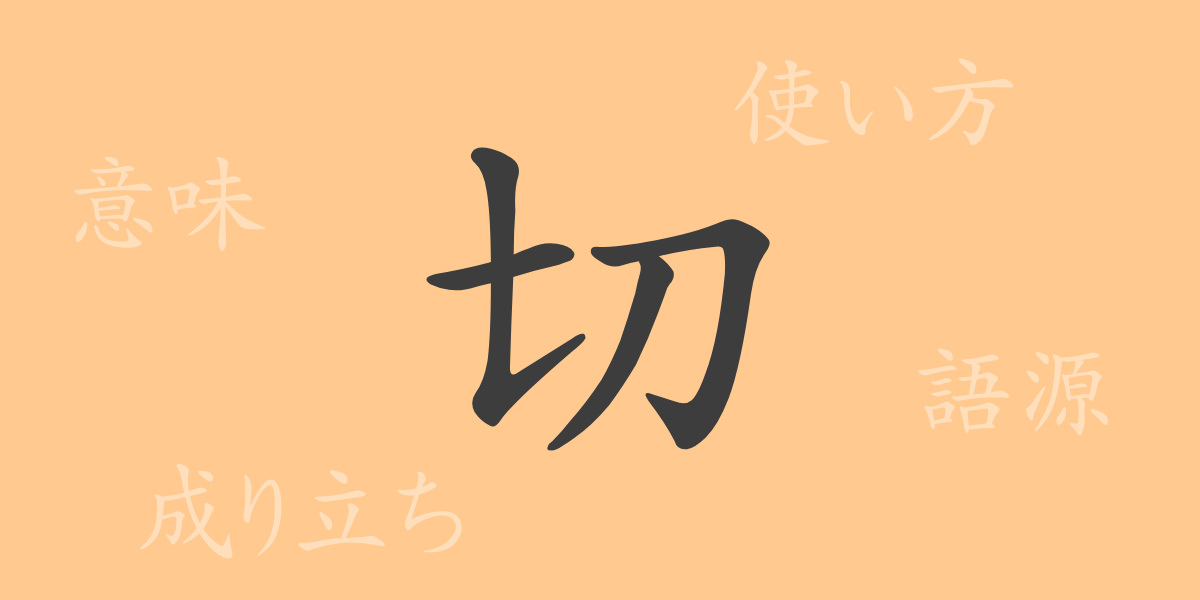The beauty of the Japanese language lies in its complexity and depth. Today, we spotlight “切” (きり), a common kanji deeply rooted in everyday life and history, symbolizing the richness of Japanese culture and language. This article explores the origins, uses, and phrases associated with “切”, enhancing our understanding of its profound implications in Japanese expressions.
Origins of 切 (きり)
The kanji “切” dates back to ancient China, originally depicted as a “刀” (knife) cutting through “肉” (meat), symbolizing the act of cutting or dividing. Over time, it evolved to represent not only physical separation but also metaphorical and abstract concepts, making it a versatile character in Japanese with a variety of expressions.
Meaning and Usage of 切
“切” carries multiple meanings such as “to divide something”, “to cut off”, and “to deeply desire”. It is used in various contexts, from the physical act of cutting with “切る” (きる) to defining moments and relationships with “区切る” (くぎる). It’s also used in expressions like “心を切る” (こころをきる), indicating an emotional disconnection, making it valuable for conveying feelings.
Readings, Stroke Count, and Radical of 切
“切” is straightforward yet powerful in structure, making it easy to remember:
- Readings: The on’yomi (Sino-Japanese reading) is “セツ” (setsu), and the kun’yomi (native Japanese reading) are “きる” (kiru) and “きり” (kiri).
- Stroke Count: Composed of 4 strokes.
- Radical: The radical is 刀部 (かたなぶ – blade), directly related to the action of cutting.
Phrases and Idioms Using 切
There are numerous phrases and idioms involving “切”, reflecting the richness of Japanese expression. For example, “一切” (いっさい) means ‘everything’, and “手を切る” (てをきる) refers to cutting off a relationship. The phrase “死に物狂い” (しにものぐるい) describes doing something desperately, risking life itself, while “四苦八苦” (しくはっく) represents experiencing various hardships. These phrases effectively convey Japanese emotions and situations.
Conclusion on 切
The meanings embedded in a single kanji like “切” vary significantly depending on the context of its use. Its applications reflect its versatility and deep historical significance. From literal physical cutting, through emotional and temporal boundaries, to expressions of intense desire, “切”‘s expressive power is immense. Each encounter with “切” in daily conversation, literature, or business invites us to consider the historical and cultural backdrop that enriches its meaning.

























